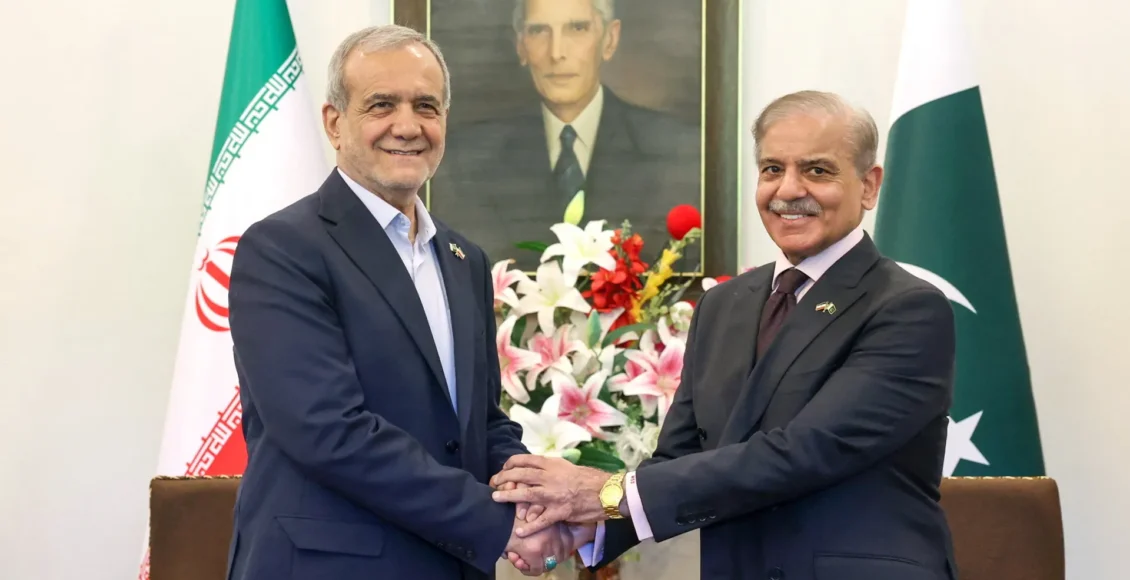The recent two-day visit of Iranian President Dr. Masoud Pezeshkian to Pakistan marked a significant moment in bilateral relations, with both nations pledging deeper cooperation in key sectors and setting a bold trade target of $10 billion annually.
During the visit, Pakistan and Iran signed multiple memorandums of understanding (MoUs) covering political, economic, scientific, and technical cooperation. One of the most notable agreements was the joint usage of the Mirjaveh (Taftan) border crossing, aimed at streamlining cross-border trade.
President Pezeshkian, speaking alongside Prime Minister Shehbaz Sharif, called Pakistan his “second home” and expressed gratitude for Pakistan’s support during Iran’s recent 12-day conflict with Israel. In response, PM Sharif thanked Iran for backing Pakistan during its own recent four-day conflict with India.
In a symbolic gesture, President Pezeshkian visited the mausoleum of Allama Iqbal in Lahore, praising the poet-philosopher as a shared cultural icon and emphasizing the unity of Islamic nations.
The visit caught attention in India as well, where social media users noted that the Iranian president landed at the same airport India claimed to have destroyed in recent hostilities.
The $10 Billion Trade Challenge
While the $10 billion trade target is ambitious, many believe it’s a steep climb given the international sanctions Iran faces—particularly from the United States. These restrictions severely limit Iran’s global trade capacity and access to financial systems, making formal trade with countries like Pakistan more complicated.
Banking transactions are especially problematic under sanctions, complicating payments and currency exchanges. Despite these hurdles, informal trade between Iran and Pakistan is estimated at nearly $10 billion annually—mostly routed through third countries. Legalizing and formalizing this trade, however, remains a difficult task.
Efforts like restoring the Mand-Pishin joint border market and the proposed launch of two additional border markets—Chagai-Kuhak and Gabd-Rimdan—are seen as steps toward increasing economic integration. Pakistani Commerce Minister Jam Kamal has urged Iran to expedite these initiatives.
Under a mutual plan, a Pakistani delegation will soon inspect the Rimdan border crossing to evaluate trade potential and infrastructure needs. Discussions will then focus on managing a joint free trade zone and offering tax and customs incentives to attract investors.
Pakistan has also announced the finalization of a Free Trade Agreement (FTA) with Iran to provide a structured framework for enhancing trade. However, political and security concerns, especially in Pakistan’s Balochistan province—plagued by militant attacks—pose a continuing challenge.
Despite the obstacles, business leaders in Pakistan welcomed the trade ambitions. Former FPCCI President Mian Anjum Nisar told Business Recorder that the goal is a step in the right direction but warned that without practical action, such targets remain “paper promises.” He also stressed the urgency of completing the long-delayed Iran-Pakistan gas pipeline project.
Iran’s vast energy reserves and Pakistan’s growing energy needs offer clear opportunities for partnership. Both nations could also benefit from participating in regional trade corridors and economic initiatives.
Pakistan has called for the convening of the 22nd Iran-Pakistan Joint Economic Commission to accelerate implementation of agreed projects, though no date has yet been announced.
Achieving the $10 billion trade goal will require strategic partnerships, diplomatic finesse to navigate sanctions, and strong political will on both sides. Experts say ongoing diplomatic engagement will be key to overcoming obstacles and unlocking the true potential of Pakistan-Iran ties.



